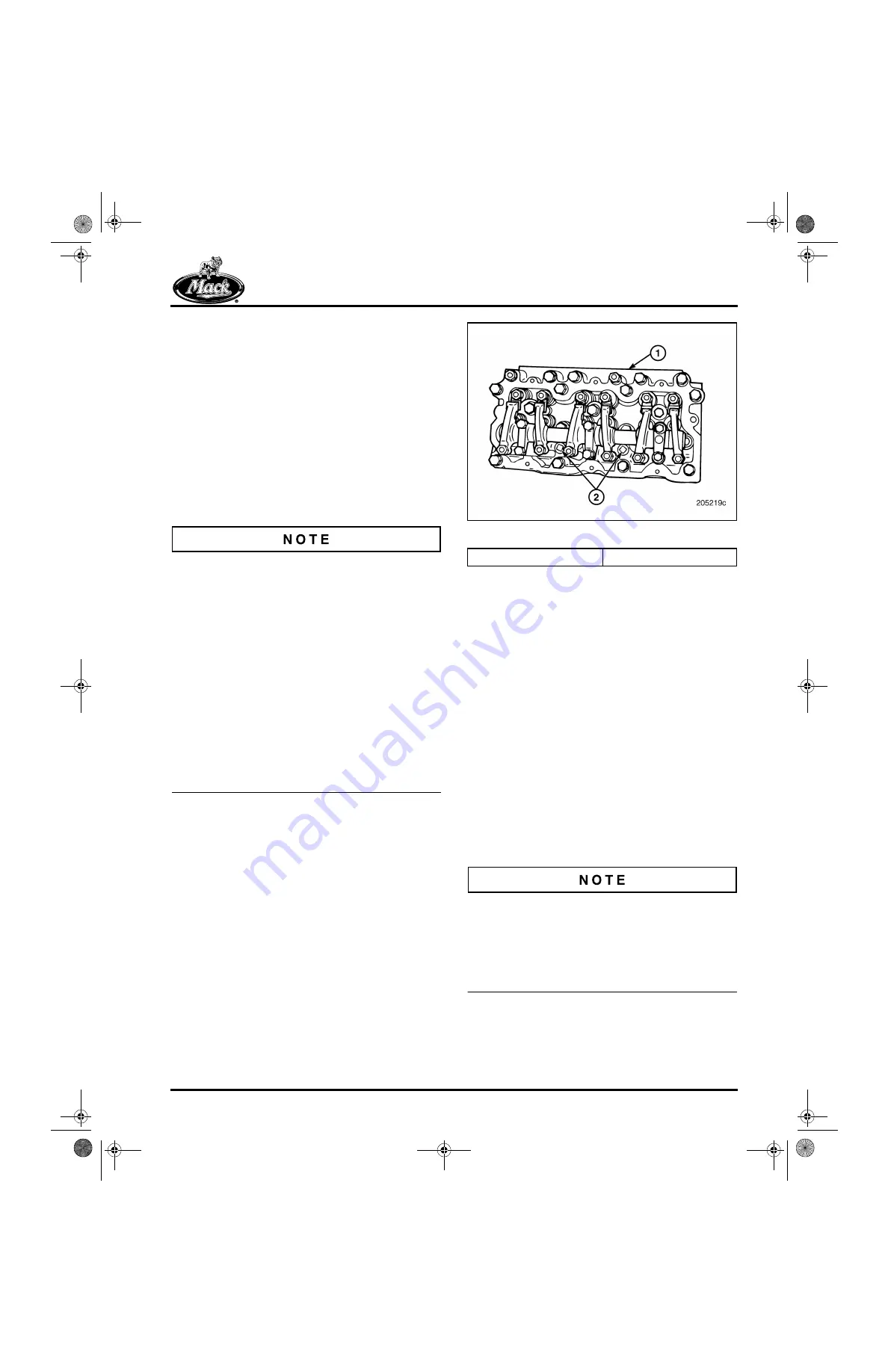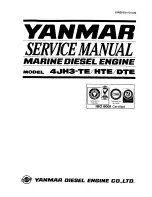
TROUBLESHOOTING
Page 71
CYLINDER HEAD AND
CYLINDER BLOCK LEAK TEST
PROCEDURE
Verify suspected leaks in the cylinder heads or
cylinder block by pressure testing before deciding
to replace the cylinder head or block. Do not use
magnaflux inspections alone as replacement
criteria.
Before proceeding with the tests, look for coolant
stains around the 3/4-inch NPT plugs on the tops
of the cylinder heads. Check that the plugs are
torqued to 55 lb-ft (75 N•m).
Cylinder head pipe plugs used on engines
manufactured April 1, 1999 or later (beginning
with engine serial number series 9F) have
encapsulated epoxy sealant applied to the
threads. These pipe plugs are tightened to
55 lb-ft (75 N•m) at assembly, and the epoxy
locks them in place. These plugs will not turn
when an attempt is made to tighten them. If a
coolant leak at an epoxy-sealed pipe plug is
suspected, the plug may be removed by heating it
to 400
°
F (205
°
C) with a torch. Before reinstalling
the plug, the epoxy sealant must be thoroughly
cleaned from the pipe plug threads, and the
threads in the cylinder head. The plug and the
cylinder head threads must then be cleaned with
Loctite
®
Primer T and resealed with Loctite
®
277.
Reinstall the plug and torque to 55 lb-ft (75 N•m).
Also, make sure leakage is not caused by the oil
cooler or air compressor. Perform the simpler
checks first to prevent unnecessary engine
disassembly. While performing the following
tests, watch for indications of minor leaks, such
as small bubbles, that can develop into more
severe leaks during engine operation.
Cylinder Head and Head Gasket
Check — In Chassis
1. Look for coolant stains around the 3/4-inch
NPT pipe plugs on top of the cylinder heads.
Check plug torque. The plug torque
specification is 55 lb-ft (75 N•m). Refer to
Figure 63.
63
Figure 63 — Cylinder Head Pipe Plugs (3/4-Inch NPT)
2. Before removing the thermostat, drain
coolant from the cooling system until the
coolant level is below the thermostat
housing.
3. Remove the thermostat and leave the
thermostat housing open. Install a short
section of hose, approximately 6–8 inches
(152–203 mm) long, on the thermostat
housing and add enough coolant to fill the
housing.
4. Remove the fan belt from the water pump.
5. Start the engine and run at 1000 rpm.
6. Observe coolant in the thermostat housing
for air bubbles. This can indicate combustion
pressurization of the cooling system and
possible cylinder head gasket failure. Also,
watch for traces of oil which would indicate
possible cylinder head gasket or oil passage
leakage.
It is normal for some air bubbles to form in the
cooling system as a result of the engine warming
up to operating temperature.
The occurrence of large “gulp-type” movements
of coolant indicates a partially blocked oil cooler
inlet screen (bundle-type oil cooler only).
7. Apply a soap-and-water solution between
two cylinder heads to check for external
combustion leakage.
1. Cylinder Head
2. Pipe Plugs
5_106_00.bk Page 71 Friday, August 4, 2000 11:17 AM
BDC for engine manuals and specs
















































